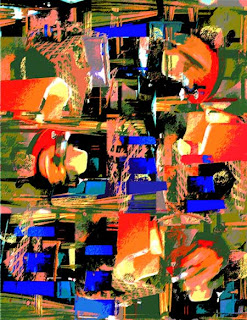
This post is in response to a writing prompt
at Mama’s Losin’ It: What are you putting off right now?
Many years ago I saw a "Simplified Tax Form." It asked, "How much did you earn?" and then it requested that you send it all to the IRS.
I, of course, don't want to send all of my money to the government, but I would be very happy if it said something like, "How much money did you earn?" Send us 20%. Done.
A lot of people complain about paying taxes. After living in Brazil for several years and seeing the totally messed up tax system (I believe it is much better now) and living at the side of the federal highway ---a dirt road ---that went through my town, I have learned to appreciate the things we receive for our taxes: highways, schools, medicare, water lines, snow plowing, police, fire, and military protection....
My problem isn't paying the taxes, it is preparing them.
For the last 10 years or so, when I chose vacation time, I always requested a week off near the beginning of April to prepare income taxes. I didn't need an entire week, but I did them leisurely and if something was missing, I had time to call the bank for information or the IRS with a question.
We use Turbo Tax. Our taxes are basically the same every year ---only the numbers are different ---so it really isn't that difficult. All year, I slip tax documents into one folder. In April, I divide everything into categories: income, charitable donations, taxes paid, mortgage interest, interest and dividends earned. Although it is time-consuming, it is rather simple. But, I still procrastinate.
My brother-in-law has been doing my mother's taxes for many years, but since I am not working now, I decided it was time for me to take over hers as well. Tom explained that they are rather complicated because of the way some of her investments have to be handled. A few days ago, I went to his house for a tutorial on the preparation. He showed me three spreadsheets he created to help calculate and keep track of the numbers. He was a math teacher for many years, but he told me that my mother's taxes were time-consuming and difficult.
I have created many spreadsheets to keep track of our mortgage balance or project the return on investments, so I thought it might be difficult, but I could handle it. When I left Tom's house, I was sure I knew what to do.
That night, I decided to start on my mother's taxes while the instructions were still fresh in my head. I used the disk Tom gave me with last year's tax return, to transfer basic information: my mother's name, social security number, address.... It soon asked me for information I needed to crunch on the spreadsheets before entering it in Turbo Tax.
I opened the spreadsheet files and started to enter numbers from my mother's documents, and then, I couldn't remember anything Tom had taught me. I was lost, so I went to bed.
The next night I tried again and was able to enter some information, but there was a paper copy of a spreadsheet with the same name as one on the computer, but they were different. I had no idea what to do with them.
Those who know me, know that I stay up all night. I love working when it is dark and quiet and no one to bother me. I can't call my brother-in-law at 3:00 am to ask him questions, and I can't even wake my husband for help, so I am putting off the taxes for now. As Mark Twain said, "Never put off until tomorrow, what you can do the day after tomorrow just as well."
Tom told me that after my father died, my mother took her taxes to the library where they had volunteers to help senior citizens with tax returns. But every year, she would get a letter from the IRS saying they were wrong. She would take her documents and tax forms to Tom to correct. After several years Tom decided it would be easier to do them correctly than have to correct them later. So he took on the task.
He posted this question to me. If the IRS can write you a letter telling you that $127.16 was missing from your return ---if they have those numbers on file ---why do we have to fill in a tax return. Why can't they feed the information into a computer and file the taxes for everyone? Then they could send everyone a refund or a bill. There could, of course, be an appeal process.
I would gladly have the IRS do the work for me.
Meanwhile, I am evading taxes. But just for a little while. I'm no Willie Nelson or Wesley Snipes. Not yet, anyway.
(©2009, C.J. Peiffer)
Find answers to some of your tax questions HERE.





















